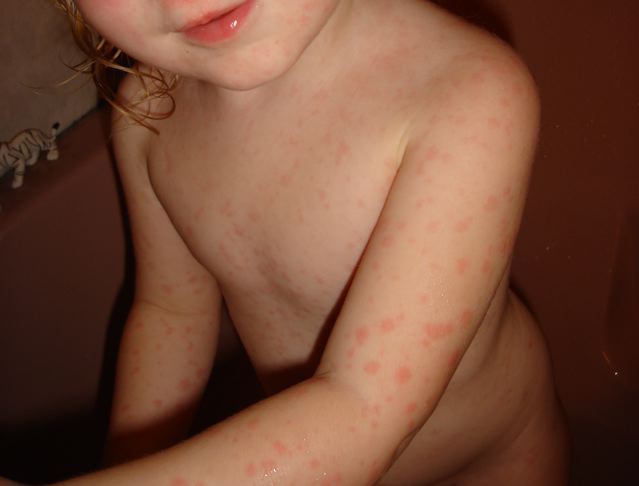Erythema multiforme is a skin condition of unknown cause, possibly mediated by deposition of immune complex (mostly IgM) in the superficial microvasculature of the skin and oral mucous membrane that usually follows an infection or drug exposure. It is an uncommon disorder, with peak incidence in the second and third decades of life.
Presentation

The condition varies from a mild, self-limited rash (E. multiforme minor) to a severe, life-threatening form known as erythema multiforme major (or erythema multiforme majus) that also involves mucous membranes.
Consensus classification:
- Erythema multiforme minorâ€"typical targets or raised, edematous papules distributed acrally
- Erythema multiforme majorâ€"typical targets or raised, edematous papules distributed acrally with involvement of one or more mucous membranes; epidermal detachment involves less than 10% of total body surface area (TBSA)
- SJS/TENâ€"widespread blisters predominant on the trunk and face, presenting with erythematous or pruritic macules and one or more mucous membrane erosions; epidermal detachment is less than 10% TBSA for Stevens-Johnson syndrome and 30% or more for toxic epidermal necrolysis.
The mild form usually presents with mildly itchy (but itching can be very severe), pink-red blotches, symmetrically arranged and starting on the extremities. It often takes on the classical "target lesion" appearance, with a pink-red ring around a pale center. Resolution within 7â€"10 days is the norm.
Individuals with persistent (chronic) erythema multiforme will often have a lesion form at an injury site, e.g. a minor scratch or abrasion, within a week. Irritation or even pressure from clothing will cause the erythema sore to continue to expand along its margins for weeks or months, long after the original sore at the center heals.
Causes

Many suspected aetiologic factors have been reported to cause EM.
- Infections: Bacterial (including Bacillus Calmette-Guérin (BCG) vaccination, haemolytic Streptococci, legionellosis, leprosy, Neisseria meningitidis, Mycobacterium, Pneumococcus, Salmonella species, Staphylococcus species, Mycoplasma pneumoniae), Chlamydial.
- Fungal (Coccidioides immitis)
- Parasitic (Trichomonas species, Toxoplasma gondii),
- Viral (especially Herpes simplex)
- Drug reactions, most commonly to: antibiotics (including, sulphonamides, penicillin), anticonvulsants (phenytoin, barbiturates), aspirin, antituberculoids, and allopurinol and many others.
- Physical factors: radiotherapy, cold, sunlight
- Others: collagen diseases, vasculitides, non-Hodgkin lymphoma, leukaemia, multiple myeloma, myeloid metaplasia, polycythemia
EM minor is regarded as being triggered by HSV in almost all cases. A herpetic aetiology also accounts for 55% of cases of EM major. Among the other infections, Mycoplasma infection appears to be a common cause.
Herpes simplex virus suppression and even prophylaxis (with acyclovir) has been shown to prevent recurrent erythema multiforme eruption.
Treatment
_Erythema_multiforme_showing_dilated_vessels_50x.jpg/120px-An_introduction_to_dermatology_(1905)_Erythema_multiforme_showing_dilated_vessels_50x.jpg)
Erythema multiforme is frequently self-limiting and requires no treatment. The appropriateness of glucocorticoid therapy can be uncertain, because it is difficult to determine if the course will be a resolving one.
See also
- Erythema multiforme major
- Erythema multiforme minor
- Toxic epidermal necrolysis
- Stevensâ€"Johnson syndrome




0 komentar :
Posting Komentar